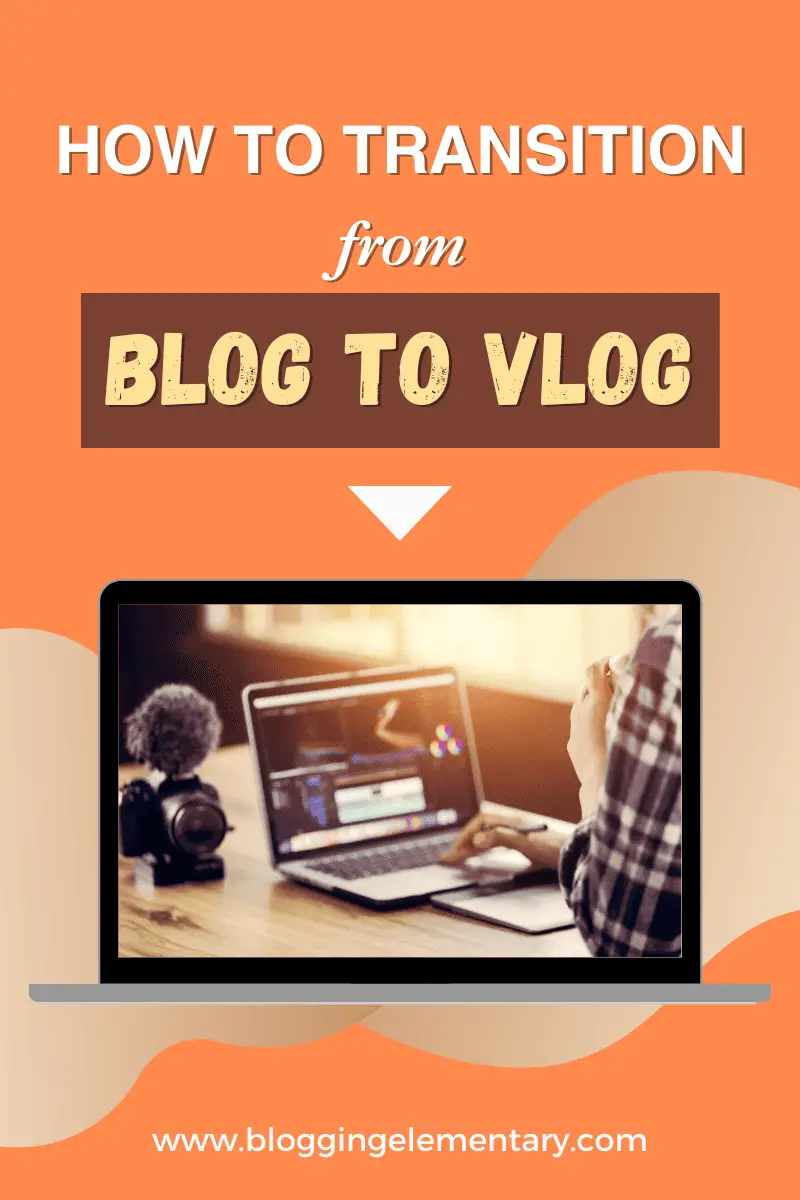Over the past decade, we’ve witnessed a significant shift from traditional blogging, to dynamic and engaging video content. So, for content creators moving from blogging to vlogging is a natural progression.
This transformation reflects changing audience preferences, technological advancements, and the endless quest for more immersive and interactive forms of information and entertainment.

Blogging to Vlogging: A Beginner’s Guide
The appeal of video content has surged, with audiences increasingly favoring visual and auditory experiences over text-based information.
This shift is not just a trend but a reflection of the medium’s ability to convey complex messages in a more engaging, personal, and direct manner.
Understanding the Appeal of Video Content
Video content allows creators to use visuals, sound, and storytelling techniques to craft compelling narratives that captivate viewers, foster a stronger emotional connection, and encourage social sharing.
Statistics from the past two years underscore the growing dominance of video content:
- Viewership Growth: According to a report by Cisco, video traffic accounted for 82% of all consumer internet traffic by 2022, up from 73% in 2021.
- Engagement Rates: A study by HubSpot revealed that video content generates 1200% more shares than text and images combined.
- Consumer Preference: Nielsen’s research indicates that the average American spent over 100 minutes per day watching digital video in 2023, a significant increase from 84 minutes in 2022.
These statistics highlight not only the rising consumption of video content but also its effectiveness in engaging and retaining audience attention. As the digital landscape continues to evolve, the shift towards video content offers an invaluable opportunity for creators to expand their reach, connect with audiences in meaningful ways, and explore new creative horizons.
Planning Your Transition from Blogging to Vlogging
Transitioning from the written word to the dynamic world of video requires thoughtful preparation and an understanding of the new medium’s demands. Here are essential tips for bloggers ready to embark on their vlogging journey:
- Adapting Content for Video: Start by identifying blog posts that have performed well or topics that resonate deeply with your audience. Consider how these can be translated into video format, using storytelling techniques that leverage visuals and audio to enhance the message.
- Storytelling Techniques: Engage viewers with compelling narratives. Use a mix of personal anecdotes, demonstrations, and visual aids to bring your stories to life. Remember, authenticity and passion are key in video storytelling.
- Visual Storytelling: Invest time in planning the visual aspects of your content. Use storyboards to outline your video, ensuring that each shot contributes to the story you’re telling. Think about how you can use lighting, angles, and composition to evoke emotions and underscore your message.
- Understanding YouTube and Its Audience: Familiarize yourself with YouTube’s culture and the preferences of its user base. Explore similar channels in your niche to grasp what works and what doesn’t. Pay attention to YouTube’s algorithm and best practices for content creation, such as optimal video length, engagement strategies, and SEO tactics for titles, descriptions, and tags.
Technical Considerations for Vlogging
Vlogging doesn’t require professional equipment from the get-go, but having the right tools can significantly impact the quality of your content:
- Basic Equipment: At a minimum, you’ll need a good quality camera (a smartphone camera can suffice initially), a tripod or stabilizer for steady shots, and a microphone for clear audio. As you grow, consider investing in a DSLR or mirrorless camera for better video quality.
- Lighting: Good lighting is crucial for professional-looking videos. Natural light is a great start, but you may also want to invest in softbox lights or ring lights to ensure consistent lighting across all your videos.
- Software: For editing, there are numerous software options available, ranging from beginner-friendly applications like iMovie and Shotcut to more advanced programs like Adobe Premiere Pro and Final Cut Pro. Choose one that fits your skill level and budget.
- High-Quality Content: Focus on creating high-quality, engaging content that provides value to your audience. This includes clear audio, steady and well-composed shots, and editing that enhances the storytelling without distracting from the message.
Transitioning to vlogging is an exciting opportunity to expand your creative expression and connect with your audience in new and meaningful ways.
By carefully planning your content, understanding the platform and its audience, and addressing the technical aspects of video production, you can set the stage for a successful journey into the world of YouTube.
Leveraging YouTube Marketing Agencies
The transition from blogging to vlogging, while exciting, involves navigating a platform with its unique challenges and opportunities. YouTube marketing agencies can play a pivotal role in smoothing this transition, offering expertise and support to maximize your channel’s potential.
- Strategic Planning: These agencies assist in developing a comprehensive strategy tailored to your content and goals, helping you understand the nuances of video content trends, viewer preferences, and the competitive landscape on YouTube.
- Optimization: From optimizing your video titles, descriptions, and tags for SEO to advising on the best publishing times, YouTube marketing agencies ensure your content reaches the widest possible audience.
- Audience Growth: By leveraging data analytics and proven engagement strategies, these agencies help identify ways to grow your viewer base and increase subscriber numbers, focusing on creating a loyal community around your channel.
Monetization and Building a Viewer Base
Monetizing your YouTube channel and building a dedicated viewer base are crucial components of your vlogging journey.
- Monetization Strategies: Beyond YouTube’s Partner Program, explore diversified income streams such as sponsored content, affiliate marketing, merchandise sales, and crowdfunding through platforms like Patreon. Ensure your monetization efforts align with your content and audience expectations.
- Engaging Your Viewer Base: Engagement is key to building a loyal community. Respond to comments, ask for viewer input on future content, and consider collaboration with other YouTubers to expand your reach. Consistently delivering high-quality, relevant content is fundamental to keeping your audience engaged and growing.
By embracing the dynamic and engaging medium of video, creators can connect with their audience on a deeper level, share their stories more vividly, and explore new creative horizons.
Leveraging the expertise of YouTube marketing agencies, understanding the technical and strategic aspects of vlogging, and engaging with the community are all critical steps towards YouTube success.
The journey from blog to vlog, illustrated by the success stories of those who’ve made the leap, is a testament to the potential that lies in adapting to the changing digital landscape and making the most of the platforms available to us today.
